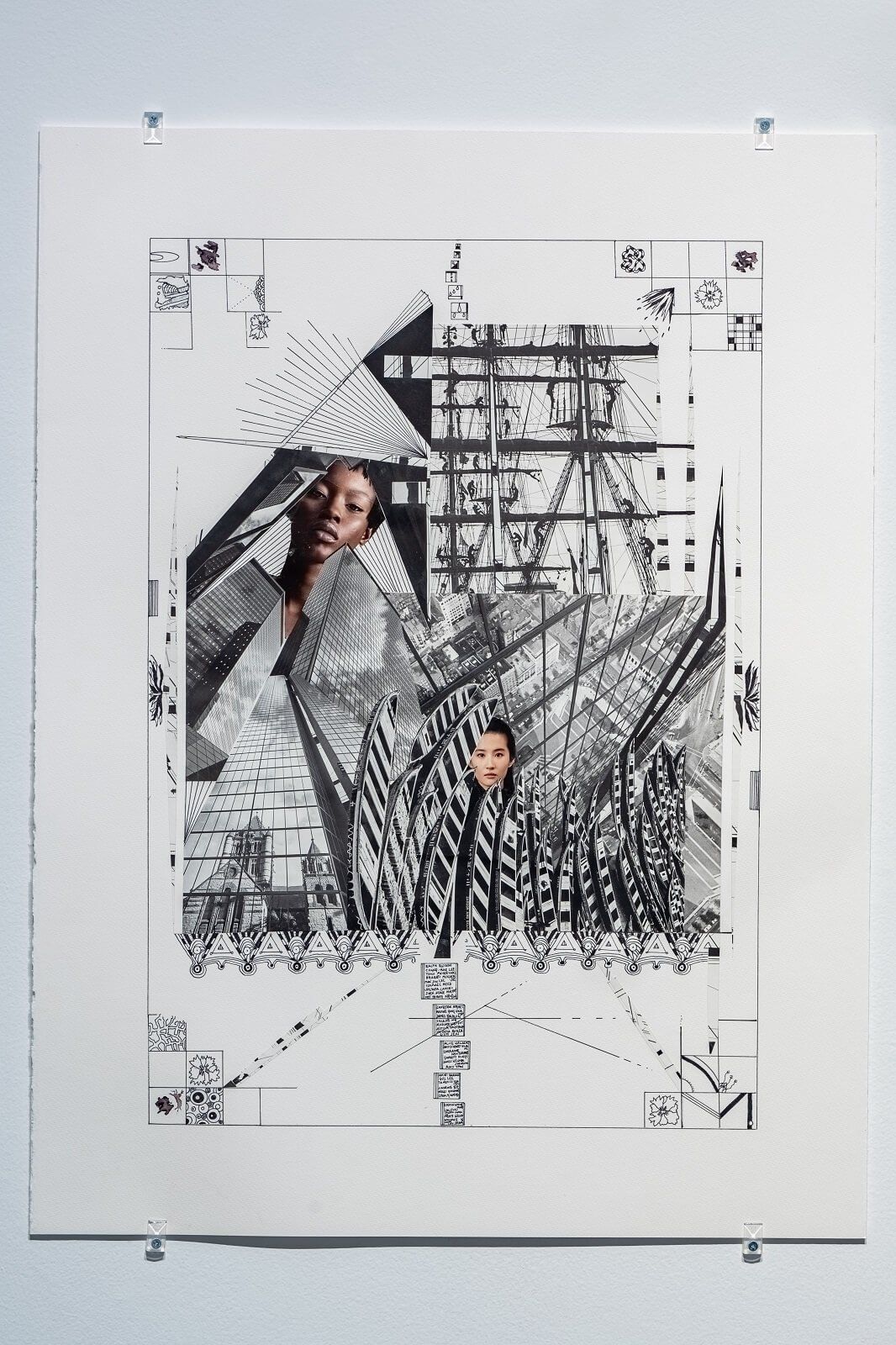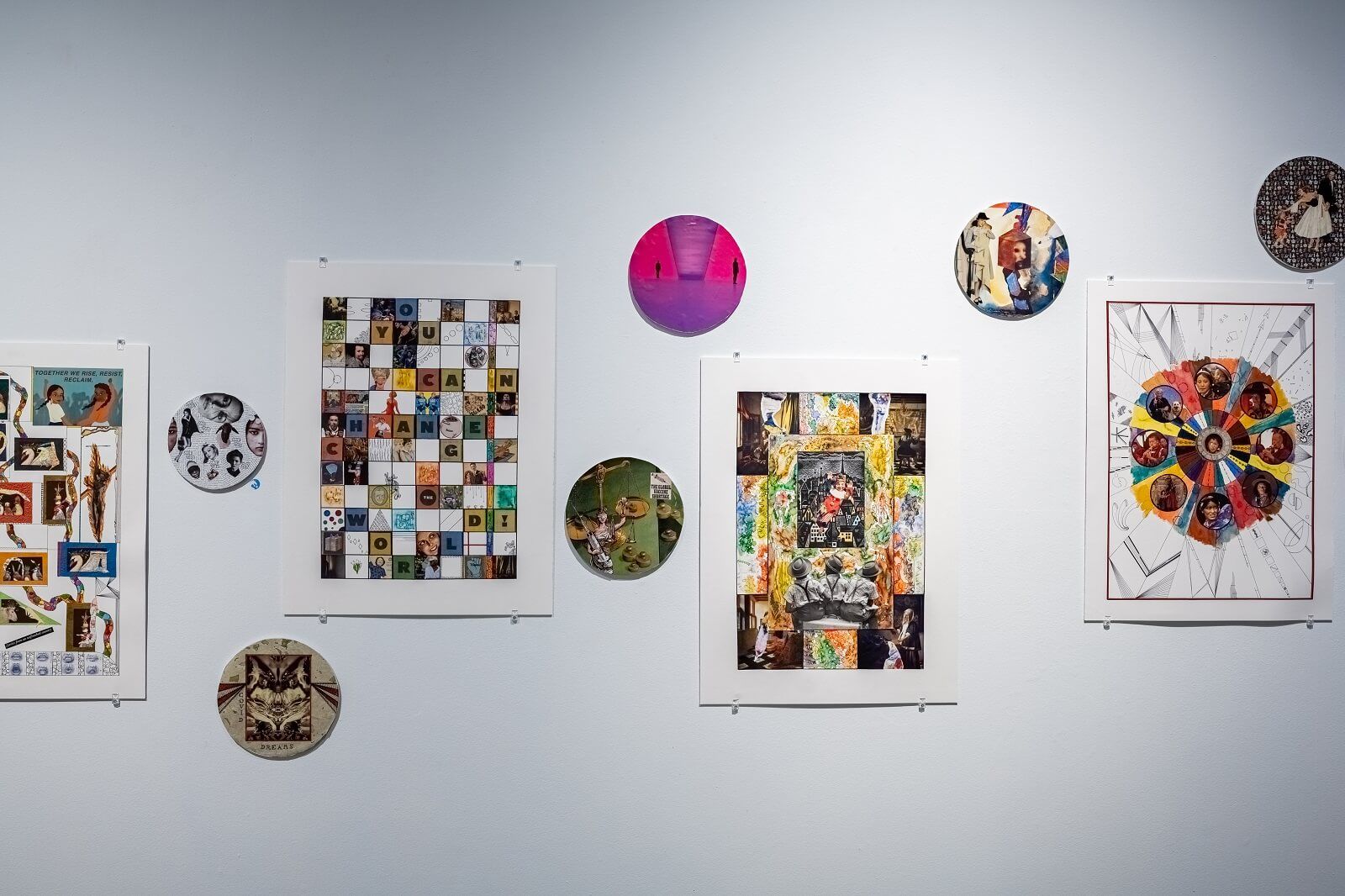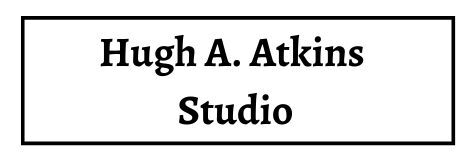Pandemic Dreams 2021
I envisaged Pandemic Dreams as a show that would reflect upon Covid and the many different responses to the constraints that we experienced. I was then presented with the possibility of working with students from a local middle school who attended a weekly class at The Delaware Contemporary.
The idea of including perspectives from a group several generations removed from my own was immediately appealing and so we set to work. By this stage, I had produced 35 larger pieces (24” x 30”) and was beginning work on a series of smaller roundels that would be interspersed among them; my idea was that the students would experiment with the roundel form and the most successful ones would become parts of the show.

I first explained to them the concept of the show, asking them for their memories of Covid and the ways in which our behavior had been altered by isolation; I also asked them to think of how reality itself had seemed dream-like and to think of how such an idea might be communicated through collage and illustration and within the dimensions of a roundel. And with that we started. The two teachers of the class had stockpiled a trove of magazines and other paper materials that the students could examine, cutting out anything that seemed engaging; as they did so, themes began to emerge and any teaching was entirely task-oriented and conversational. At the end of each session, students placed work-in-progress and materials they had yet to use in named boxes that they would use in subsequent weeks.
Over the six weeks that ensued, the group produced a significant number of the roundels so that when it came time to pick the ones that would be parts of the show, we had more than enough to choose from. We chose the ones that made the most of the form and also had specific points to make. In hanging the show, we also tried to position the roundels in such a way that they connected with other pieces around them, either technically, thematically or in terms of color.

I have always believed that collaboration is key to our being educated in the arts and this experience exemplified that contention. Not only was I able to offer my advice to these talented and invested young people, but they contributed to the success of the show by developing their own distinct visions of a phenomenon that we all experienced but in distinct and specific ways. That they were able to do so through the medium of collage was not surprising. Almost any other artistic technique would have required lengthier study whereas collage is an invitation to cut and paste.
The development of an eye for design comes with the doing, as do the compositional skills. By the end of the few weeks that we worked together, some of the students had developed a sophisticated awareness of how to frame word and image into a unified whole. It was a privilege to work with and learn from them.
